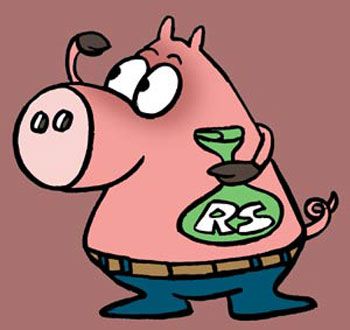 | « Back to article | Print this article |
Govt is likely to find it hard to meet deficit target next year.
 In the wake of the Seventh Pay Commission's report, the Central government will find it tough to meet all three objectives - lowering fiscal deficit, maintaining high capital expenditure, and increasing salaries in line with the recommendations of the seventh pay commission.
In the wake of the Seventh Pay Commission's report, the Central government will find it tough to meet all three objectives - lowering fiscal deficit, maintaining high capital expenditure, and increasing salaries in line with the recommendations of the seventh pay commission.
The consensus among analysts is that by accepting the recommendations of the Seventh Pay Commission, the government's task of meeting its fiscal deficit in the coming year will be challenging.
Achieving the fiscal deficit target of 3.5 per cent in FY17 would require cuts in public investment, which complicates the task before the government of reviving the investment cycle.
The fiscal impact of the wage revisions on the Central government's finances would be roughly Rs 736 billion or 0.46 per cent of gross domestic product (GDP).
Add to this the increase in costs borne by the railways - Rs 28,400 crore (Rs 284 billion) or 0.19 per cent of GDP - and the total wage increment is likely to be around Rs 1 lakh crore (0.65 per cent of GDP).
Although it is lower than the impact of the Sixth Pay Commission, which HSBC estimates was around one per cent of GDP, the payout is going to make the plan to reduce fiscal deficit from 3.9 per cent of the GDP in FY16 to 3.5 per cent in FY17 challenging, says CITI. Achieving the target would require cuts in public investments it added.
According to some analysts, even cuts in capital expenditure might not be enough to meet the deficit target. In a note, Stanchart says even if the government cuts capex to accommodate increased recurrent expenditure; it might still fail to meet the deficit target.
"Even in the most optimistic scenario (to which we assign a low probability), the government would have to reduce capex by 0.2-0.3 per cent of the GDP to meet the 3.5 per cent deficit target and implement the pay commission recommendations. We see an increased risk that it will have to both cut capex and deviate from the fiscal consolidation path if it accepts the recommendations fully," it says.
While the government might postpone meeting its fiscal deficit target or stagger payments, it is bound to have ramifications.

"Delaying an improvement in India's fiscal position would underscore a long-standing weakness for the sovereign credit profile. Government debt burden of close to 65 per cent of GDP is the highest of all BBB-rated countries," says Fitch.
In the Union Budget 2015-16, public investment was ratcheted upwards by 25 per cent to kickstart an investment recovery.
The hope was this additional boost would crowd in private investment. But, according to recent data, private sector investments continue to remain sluggish.
The worry now is that with the pay commission hike, public investment might have to be curtailed next year.
According to DBS, if the government still adheres to the fiscal deficit target, the budgeted jump in capex in 2015-16 might follow with a less than 10 per cent increase next year.
The salary revisions come at a time when the government's commitments such as providing for additional capital infusion into banks are rising.
With divestment proceeds well below budget estimates and absence of any further windfall from lower oil prices, the fiscal arithmetic gets more complicated.
Further, if the next year's fiscal deficit target is raised, it could limit the space for additional monetary stimulus.
On the brighter side, though, the salary revisions could potentially boost household consumption, which in turn could spur growth. As state governments are likely to implement the Central pay commission recommendations, the combined wage stimulus could exceed one per cent of GDP, says CITI.
As a consequence, private consumption growth could rise from 6.3 per cent in FY15 to 8.4 per cent in FY17, it adds.
StanChart estimates the consumption stimulus to the economy will be to the tune of 1.6-1.8 per cent of GDP once state governments implement similar pay hikes over a two- to three-year period.
In FY17 alone, the consumption stimulus from states is likely to be 0.3-0.4 per cent of GDP. This spur in consumption is likely to be felt across different goods and services.
While some are concerned this spurt in demand could push inflation, such fears might be premature.
As current capacity utilisation rates remain below 75 per cent, companies have enough headroom to increase production.